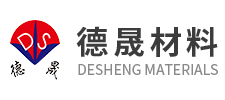Desheng One Time Virus Sampling Tube Overcome Difficulties with You
Release time:
2020-09-05
Although the epidemic has been out for six months, it has not yet been developed to prevent the spread of the epidemic. We can't take it lightly to let the virus take advantage, go out and wear masks, don't go to crowded places, pay attention to personal hygiene and other issues are worthy of our attention. Following the full implementation of free nucleic acid testing in Wuhan, free nucleic acid testing is now being implemented in all regions, and the key populations should be "exhaustively tested" and other groups "willing to perform self-examination." Nucleic acid testing has become a passport for our normal travel. When it comes to nucleic acid testing, we have to mention our disposable virus sampling tubes. The disposable virus sampling tube is filled with Virus Transport Media in the sampling tube, and the PE tube is affixed with a label for easy identification. This protects the sampling staff and protects the virus from our sampling from mutation resulting in invalid results.
Virus Transport Media composition and inspection principle
1. The components of the preservation solution are: Hanks liquid foundation, gentamicin, fungal antibiotics, BSA (V), cryoprotectant, biological buffer and amino acids.
2. The combination of multiple antibiotics has anti-bacterial and anti-fungal effects.
3. Bovine serum albumin (BSA) as a protein stabilizer can form a protective film in the virus protein shell, making it difficult to decompose and ensure the integrity of the virus.
4. The neutral environment constructed by Hanks buffer helps increase the survival time and infection stability of the virus.
5. Used for the collection and transportation of clinical influenza, avian influenza (such as H7N9), hand, foot and mouth disease, measles and other virus specimens and mycoplasma, ureaplasma, chlamydia and other specimens
Instructions:
Note: The person who collects the specimens needs to do personal protection according to relevant regulations. Pharyngeal and nasal swabs are best collected within the first 3 days of onset.
1. In a safety cabinet, pack this product into a self-prepared 5 mL screw cap plastic tube (first-class container) with a rubber ring in the screw cap. Type B products are already in screw cap centrifuge tubes, you can skip this step.
2. Collection of nasal swabs: Gently insert a cotton swab into the nasal palate of the nasal passages, and after a while, slowly turn to exit. Use the same swab to wipe the nostrils on both sides. Immerse the cotton swab in the screw cap centrifuge tube containing 3 mL of the product obtained in the previous step, discard the end of the swab, and tighten the screw cap.
3. Collection of pharyngeal swabs: wipe the bilateral pharyngeal tonsils and posterior pharyngeal wall with a cotton swab, immerse the cotton swab in the screw cap centrifuge tube containing 3 mL of the product obtained in the first step, discard the tail of the swab, and tighten the screw cap .
4. Write the type, sampling time, serial number and patient name of the sample directly on the first-level container with an oily marker.
5. Put the sealed specimen into a plastic bag of suitable size for sealing; each bag contains one specimen. At the same time, the relevant information of the specimen is also filled in the specimen inspection form, and the first-level container is sealed in a plastic bag.
6. Put the sealed bag containing the specimen in the self-provided plastic container with a screw cap and a rubber ring (in the secondary container, tighten the lid, and mark the relevant information on the container. More than 2 sealed specimens of the same patient can be placed In the same secondary container. The secondary container must withstand a pressure of not less than 95 KPa, lined with substances with water absorption and buffer capacity. All containers must be marked with a biological hazard label.
7. Place the secondary container in a special transport box (or vaccine transport box), put it in an ice row, then fill it with a soft substance, and seal it. It will be transported by a special person (2 persons). It is not allowed to be mailed. It is best to use a special vehicle.
8. If the collected specimen cannot be delivered within 24 hours, it should be stored below -70℃ as soon as possible. Those without -70℃ need to temporarily store in the refrigerator at 4℃ for a short time, and contact the delivery specimen as soon as possible.
9. Influenza virus is unstable from -20℃ to -40℃, so long-term storage is best carried out below -70℃.
The storage conditions of nucleic acid samples are harsh, RNA is very easy to cleave, and can only be stored for 24 hours at 4 ℃. If the transportation process is too long, RNA will be degraded in advance, resulting in increased false negatives. The one-time virus sampling tube is used to save the virus sample during transportation, to prevent the virus from being detected in time after the virus is sampled, and to avoid false negatives caused by the virus's early degradation during the test. Desheng walks with you, Desheng disposable virus sampling tube goes with you.
News
2024/04/15
Contact details
Contact number
Address: C8, Guanggu United Science and Technology City, Ezhou City, Hubei Province
Fax:0711-3704 589
Follow us




